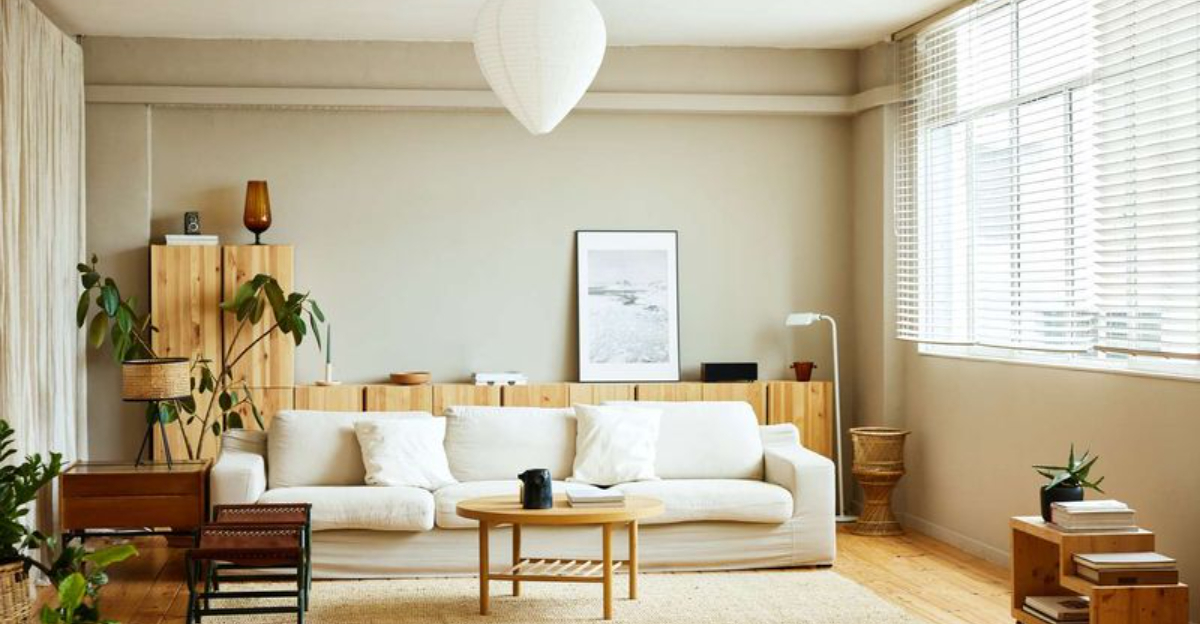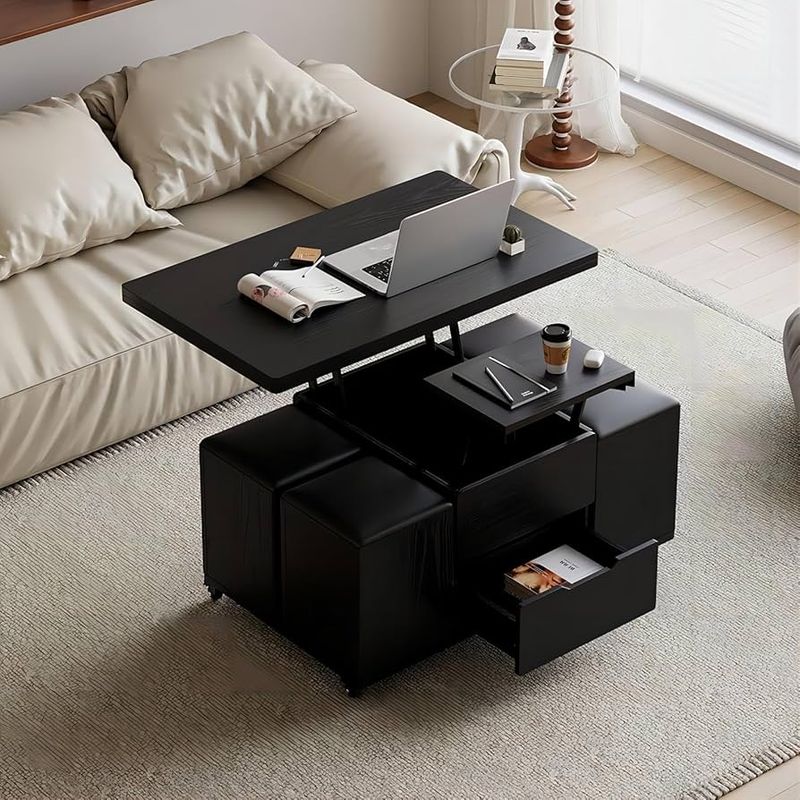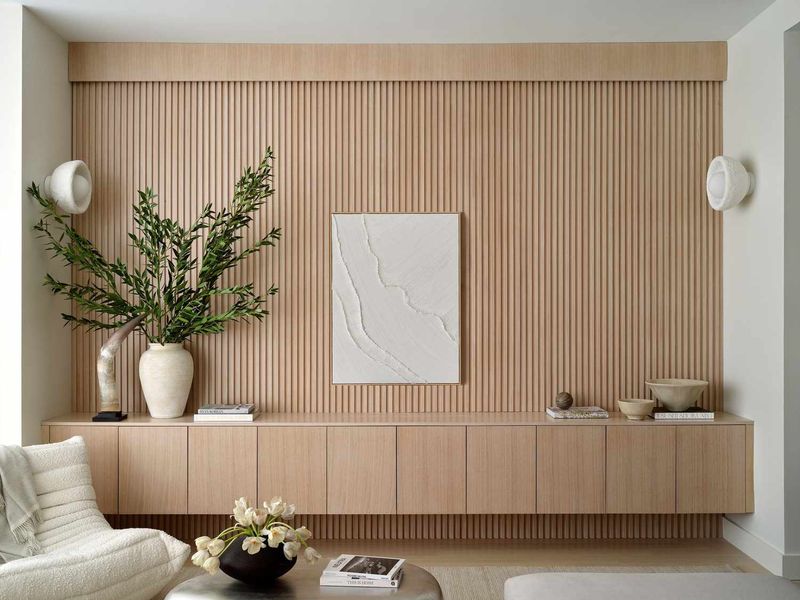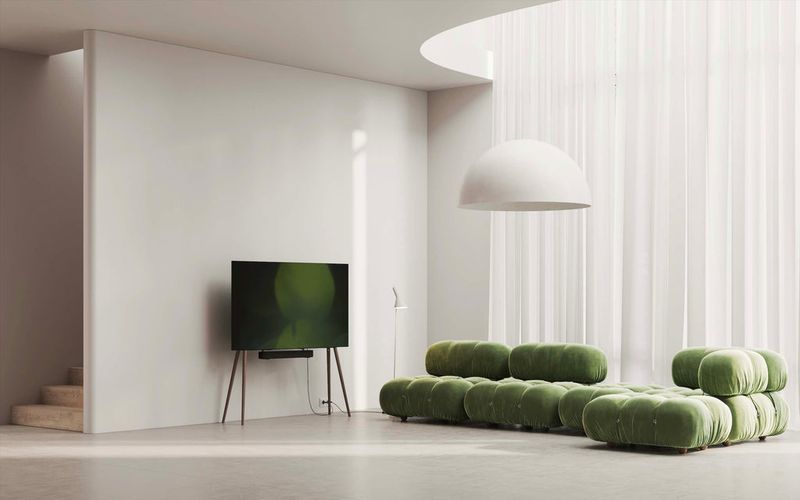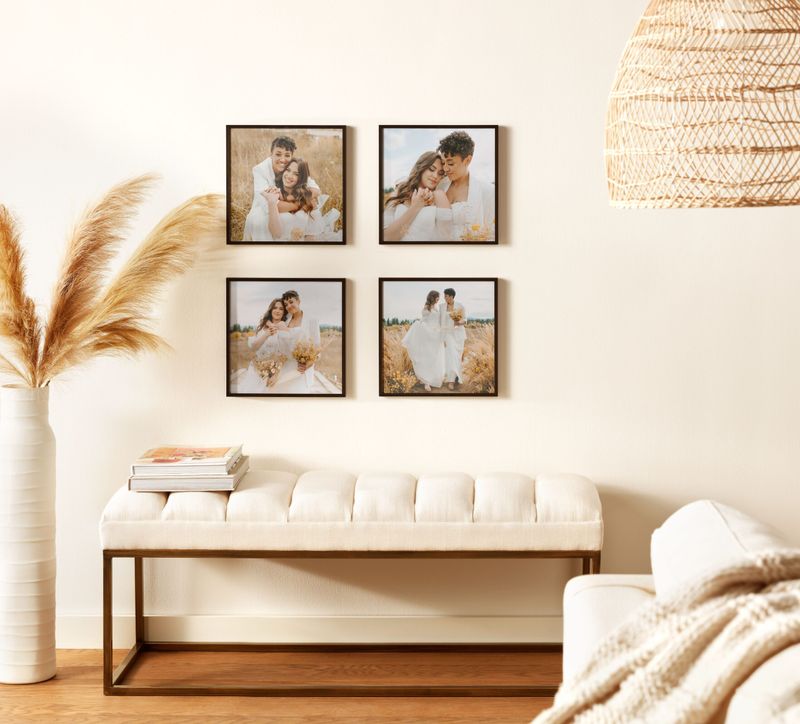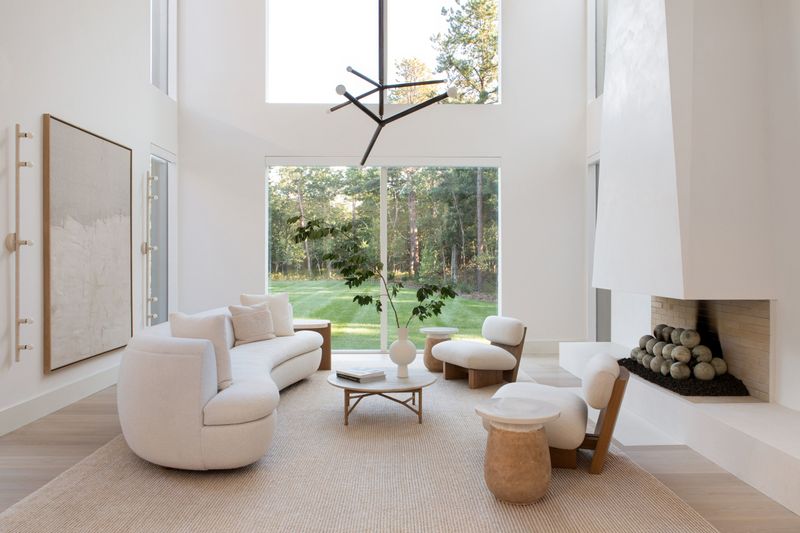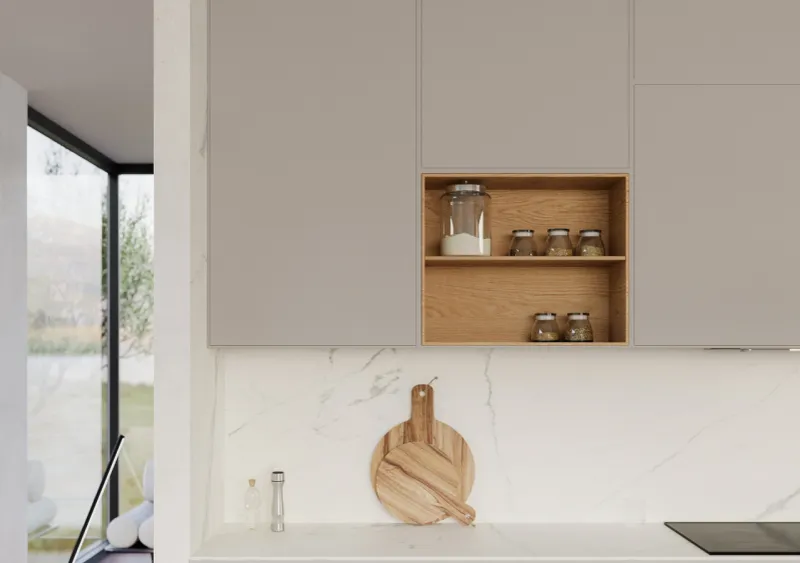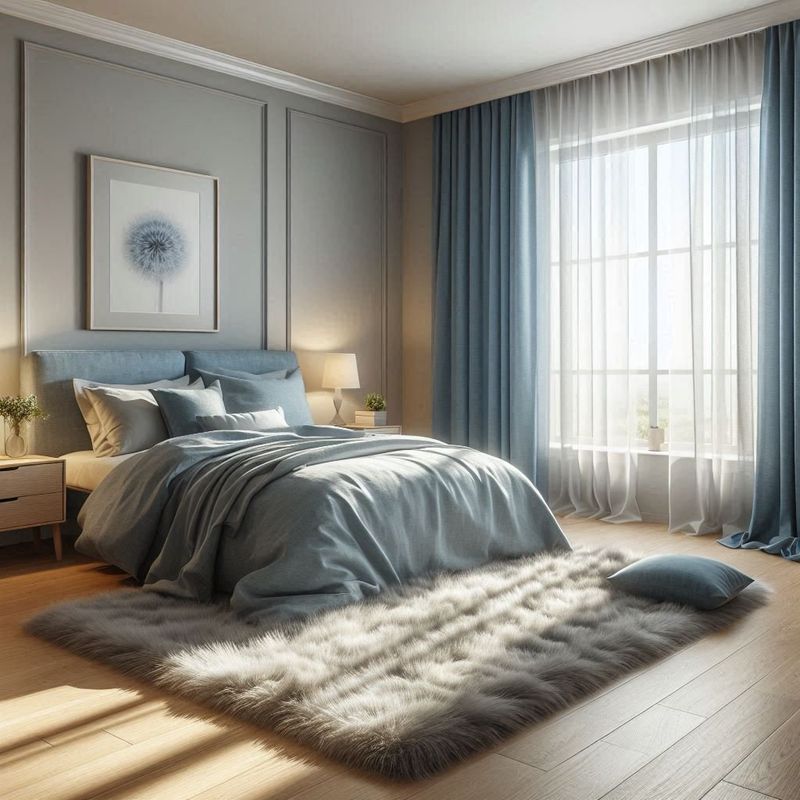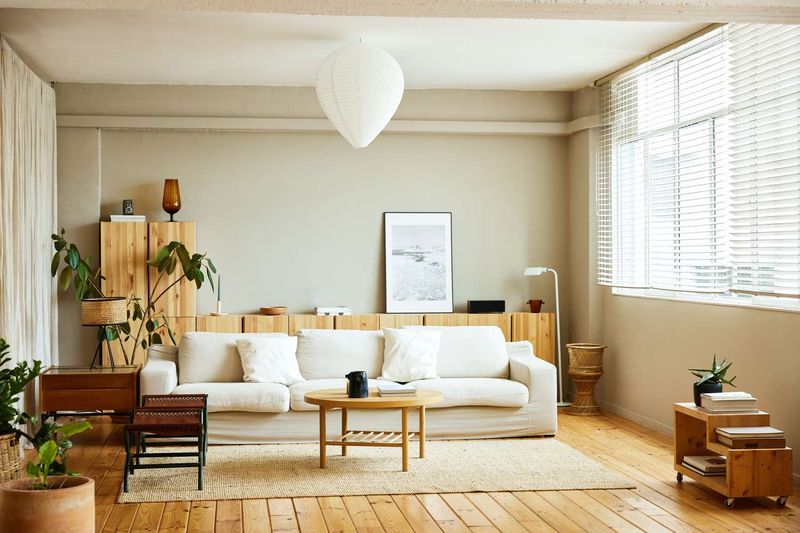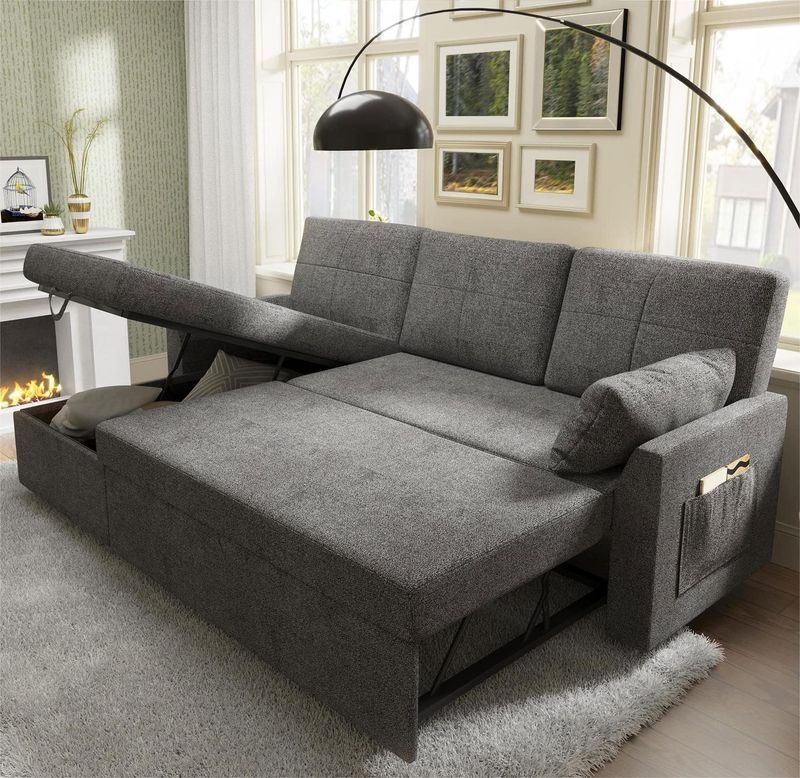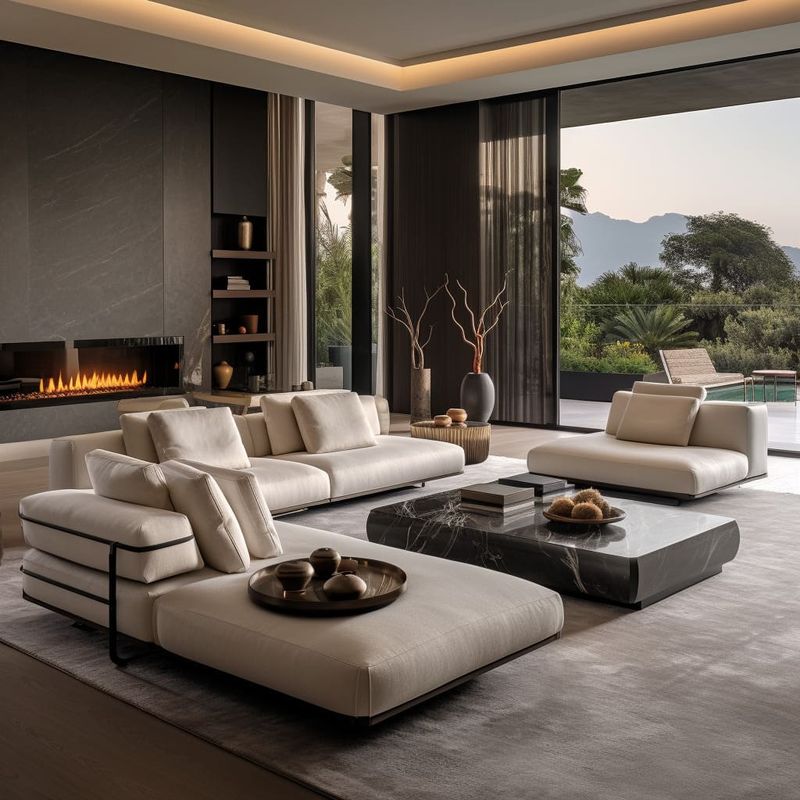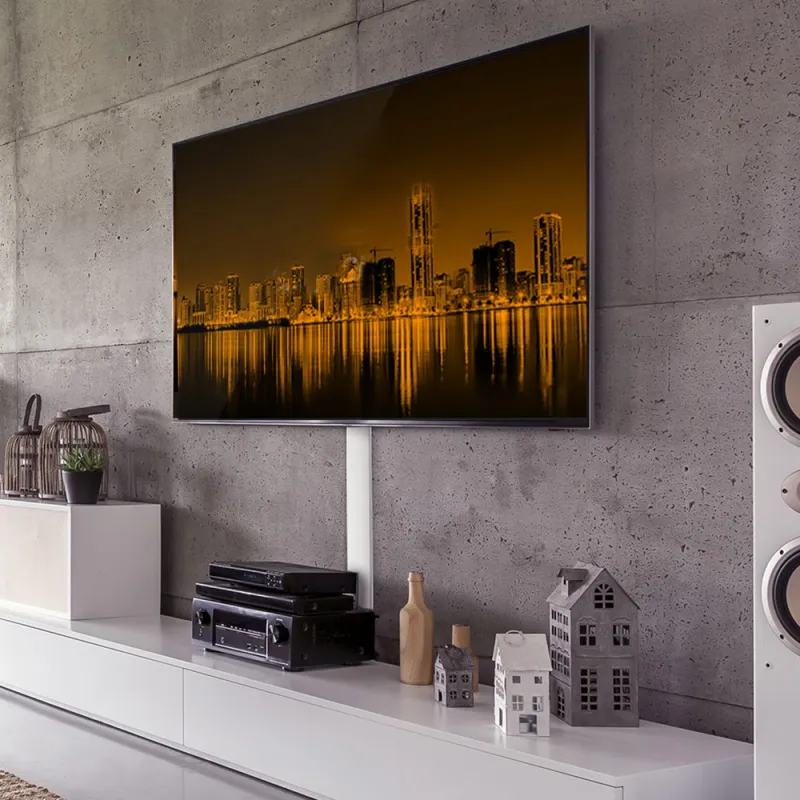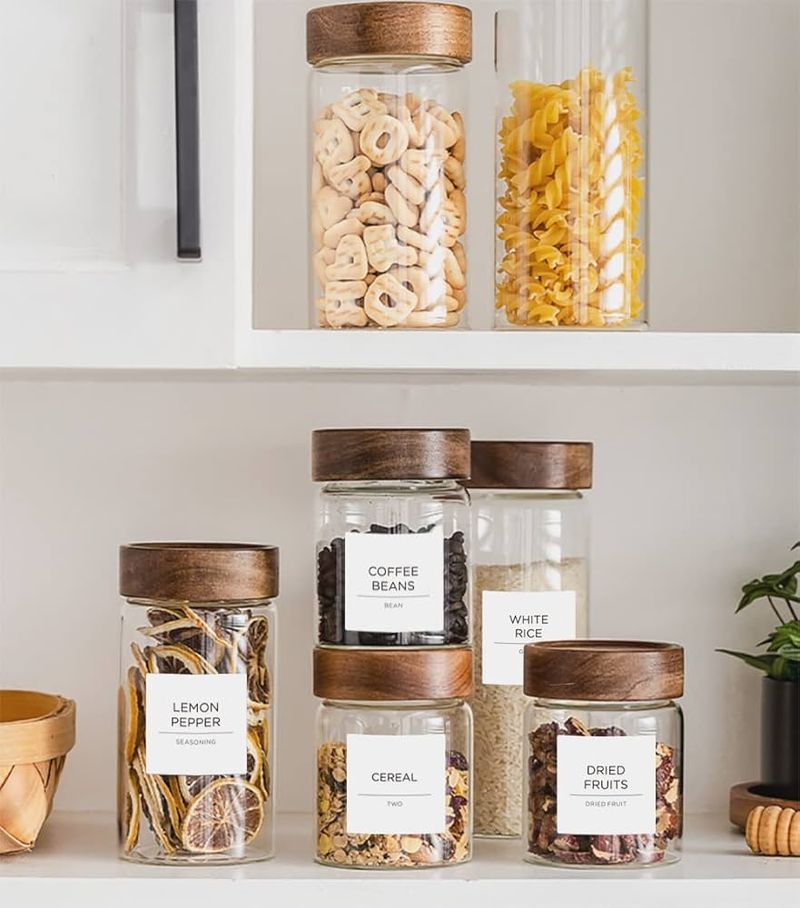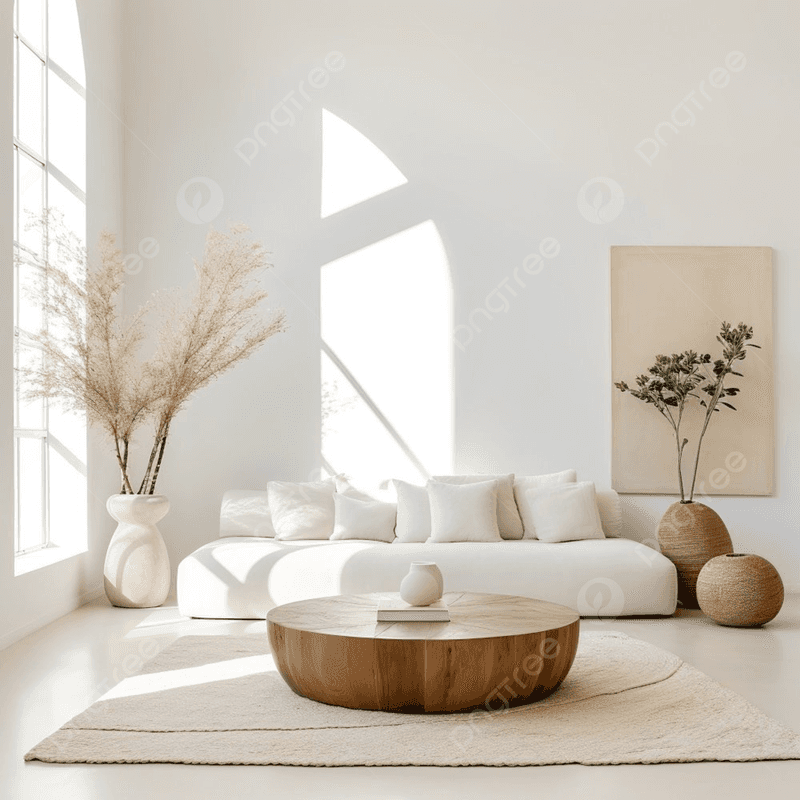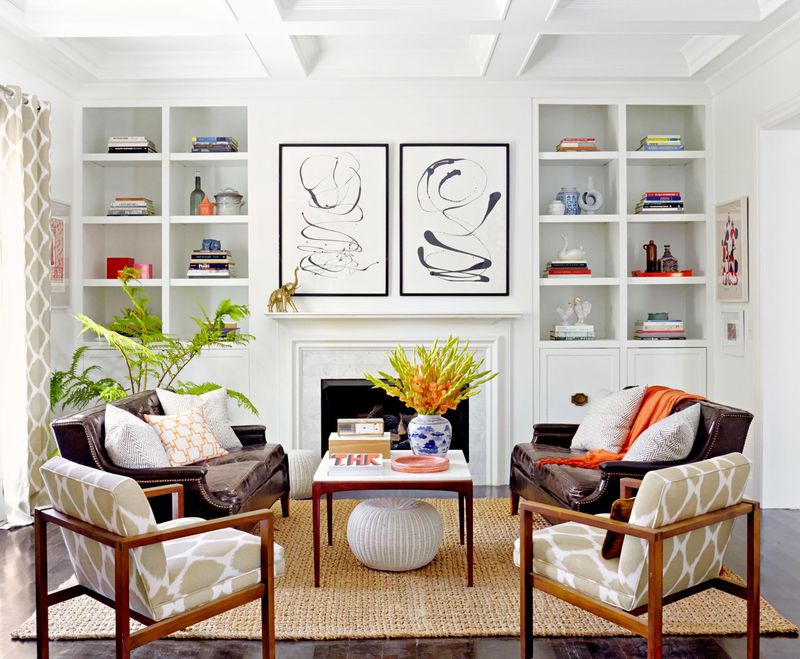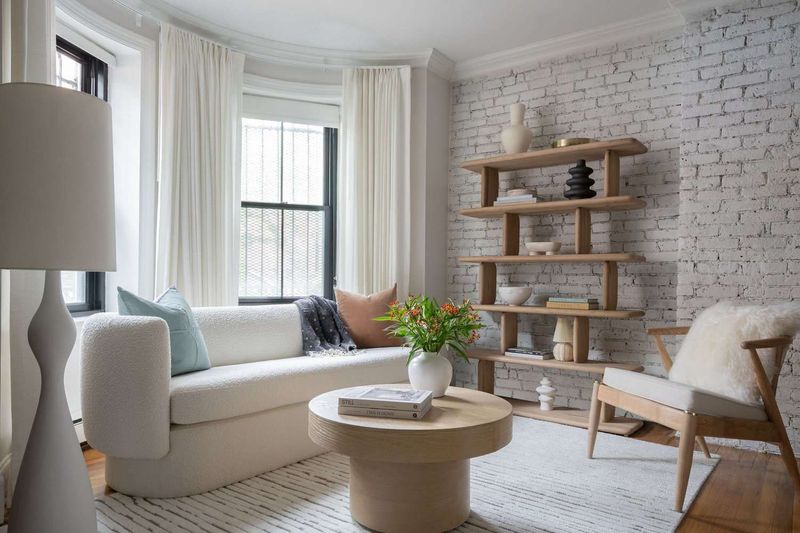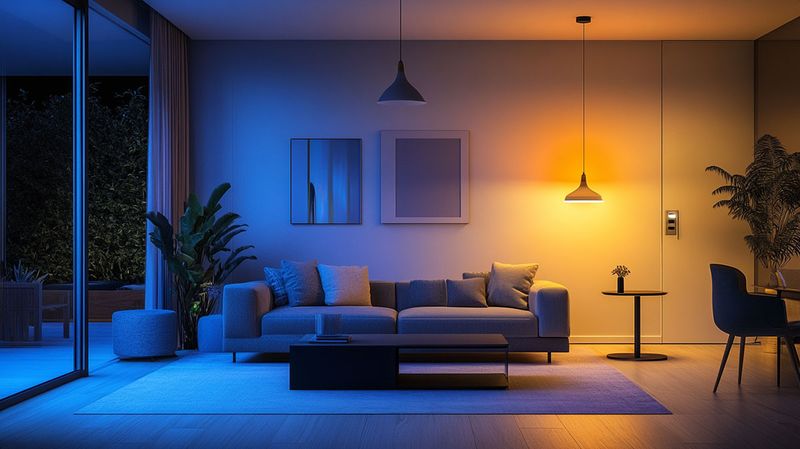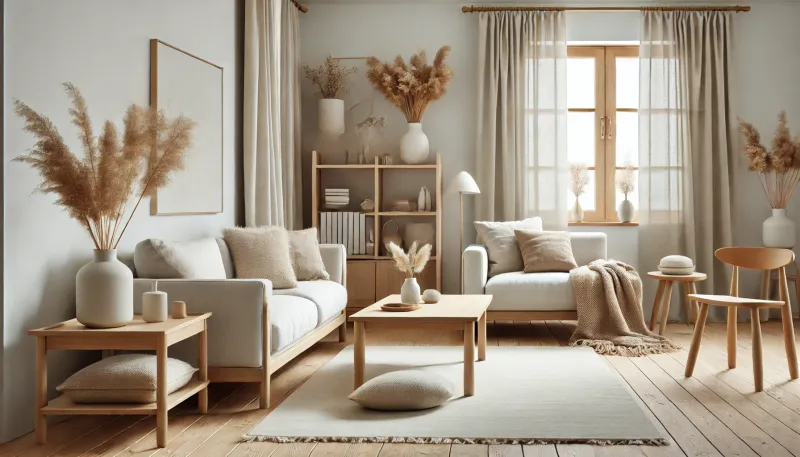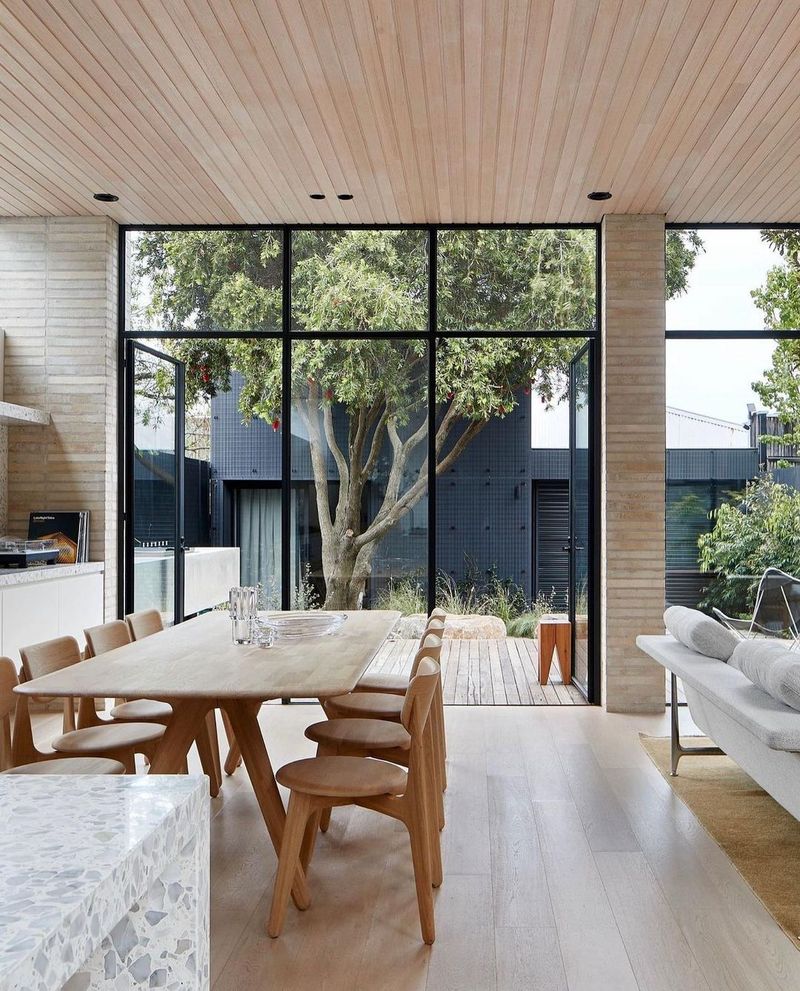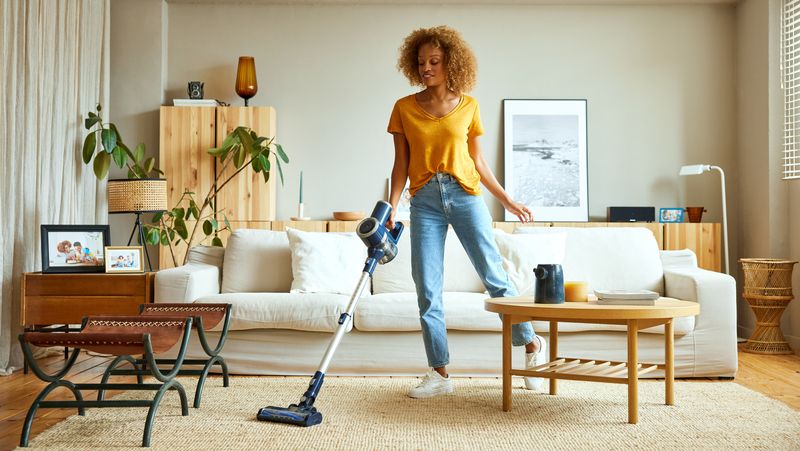Ever admired those sleek, clutter-free homes in magazines but felt overwhelmed by your own collection of stuff? You’re certainly not alone.
Minimalism might seem impossible for those of us who love our trinkets and treasures, but designers have clever tricks up their sleeves.
Take a look at these 20 ways on how to create that clean, minimalist look without actually parting with your beloved possessions.
1. Invest in Hidden Storage Solutions
Who says storage can’t be stylish? Designers recommend furniture pieces that pull double duty—like ottomans with hidden compartments or beds with drawers underneath.
Your guests will never know that inside that chic coffee table lurks your collection of magazines and remote controls. The key is choosing pieces that blend seamlessly with your decor while secretly housing all your non-minimalist sins.
2. Embrace the Power of Neutral Colors
Color chaos creates visual clutter faster than actual stuff does! According to top designers, switching to a neutral palette instantly creates that minimalist vibe, even with numerous objects around.
Stick with whites, beiges, grays, and soft earth tones for your larger elements. When everything shares a similar color family, your eye perceives the space as more cohesive and intentional rather than busy and overwhelming.
3. Create Breathing Room with Negative Space
Afraid of empty space? Don’t be! Professional designers insist that negative space is your secret weapon for faking minimalism.
Instead of filling every shelf, wall, and surface, leave some areas completely bare. This strategic emptiness gives the eye places to rest and creates an illusion of intentional simplicity. Try removing items from one shelf or clearing off a side table completely for instant minimalist credibility.
4. Master the Art of Thoughtful Display
Contrary to popular belief, minimalism isn’t about owning nothing—it’s about displaying things purposefully. Gather similar items together rather than scattering them throughout your home.
For instance, create a single statement wall for your art collection instead of hanging pieces everywhere. When items are grouped intentionally, they appear as curated collections rather than random clutter, instantly elevating your space’s minimalist credentials.
5. Opt for Furniture with Clean Lines
Ornate, busy furniture can sabotage your minimalist facade faster than you can say “baroque.” Design experts suggest swapping decorative pieces for options with sleek, simple silhouettes.
A streamlined sofa or bed frame with straight lines and minimal embellishment creates an instant minimalist foundation. Even if you keep your collection of throw pillows, the clean-lined base furniture will maintain that coveted minimalist aesthetic.
6. Utilize Closed Cabinets and Drawers
Open shelving might be trendy, but closed storage is a maximalist’s best friend in disguise. Designers frequently recommend replacing open shelving with cabinets that have solid, handle-free doors.
Behind those sleek surfaces, you can maintain your gloriously chaotic collection of mismatched dishes or craft supplies. The visual calm created by uniform cabinet fronts gives the impression of minimalist restraint while hiding your secret stash of stuff.
7. Implement a Cohesive Color Scheme
Magical things happen when you limit your color palette! Interior designers swear by the unifying power of a restricted color scheme, even in homes filled with possessions. Try selecting just 2-3 colors (plus neutrals) and stick to them throughout your space.
Your collection of books will look intentionally curated when they’re all blue spines. Even a variety of decorative objects appear as a thoughtful arrangement when they share a consistent color story.
8. Adopt the One-In-One-Out Rule
Feeling overwhelmed by your growing collection of decorative items? Designers recommend embracing the one-in-one-out principle as a practical compromise. For every new item you bring home, remove something of similar size.
This doesn’t mean you have to throw anything away—simply rotate your treasures seasonally. Your home maintains the appearance of restraint while you still get to enjoy all your beloved possessions, just not simultaneously.
9. Choose Multi-Functional Pieces
Smart designers know that fewer pieces of furniture instantly creates a more minimalist look. The trick? Multi-functional pieces that serve double or triple duty.
Consider a desk that transforms into a dining table, or a sofa that converts to a guest bed. When furniture works harder, you need less of it—creating open space that feels deliberately minimalist. Plus, you’ll save money and square footage while maintaining functionality.
10. Establish Consistent Visual Rhythms
Repetition creates order from chaos! Professional designers use consistent spacing and arrangement to create a sense of intentional minimalism, even with numerous objects.
When picture frames all hang at the same height or vases are spaced evenly along a mantel, the consistency creates a sense of purpose and restraint that reads as minimalist, regardless of how many items you’re displaying.
11. Invest in Quality Over Quantity
Nothing says “fake minimalist” like investing in one spectacular statement piece instead of several mediocre ones. Designers consistently recommend this approach for instant minimalist credibility.
When items look deliberately chosen for their exceptional quality, people assume you’ve embraced minimalist principles, even if you’re just being selective about your splurges.
12. Conceal Technology and Cords
Nothing ruins minimalist vibes faster than a tangle of cords and blinking electronics! Design professionals recommend investing in clever solutions to hide technological necessities. Consider cord management systems that tuck wires behind furniture.
Mount TVs on walls or hide them in cabinets. Wireless charging stations eliminate the need for visible charging cables. These small adjustments create a significantly cleaner aesthetic without sacrificing modern conveniences.
13. Utilize Uniform Containers
Matching containers are a maximalist’s secret weapon! According to organization experts, identical storage solutions instantly create visual calm, even when you’re storing tons of items. Replace mismatched boxes with uniform baskets, jars, or bins.
In bathrooms, transfer products into matching dispensers. When pantry staples live in identical containers, they transform from grocery store chaos into an Instagram-worthy display.
14. Embrace Empty Tabletops
Want to know the quickest way to fake minimalism? Clear your coffee table! Designers agree that maintaining at least one completely empty horizontal surface creates an immediate impression of intentional simplicity.
Even if your bookshelves are packed and your closets are bursting, a bare coffee table or nightstand signals to visitors that you’ve embraced minimalist principles. For maximum impact, make it the first surface people see when entering your home.
15. Create a Neutral Base with Pops of Color
Can’t give up your love of color? No problem! Design experts suggest creating a neutral foundation and adding strategic color pops for a minimalist-approved compromise. Keep walls, large furniture, and major textiles in whites, grays, or beiges.
Then add controlled bursts of color through smaller, easily changeable items like pillows, vases, or artwork. This approach satisfies color cravings while maintaining the restrained aesthetic that defines minimalism.
16. Perfect the Art of Layering Neutrals
Thought neutrals were boring? Think again! Design professionals create visual interest within minimalist spaces by layering different textures in the same color family. A cream bouclé pillow against an ivory linen sofa near a beige jute rug creates depth without color chaos.
The textural variety satisfies our human need for visual stimulation while the consistent color palette maintains minimalist discipline. It’s the perfect compromise for those who find true minimalism too austere.
17. Implement Strategic Lighting
Forget expensive renovations—lighting can transform your space instantly! Designers regularly use strategic lighting to create minimalist vibes without changing anything else. Replace harsh overhead fixtures with soft, ambient options like floor lamps and sconces.
Hide utilitarian lighting under cabinets or behind furniture. Well-placed lighting draws attention to intentional focal points and creates atmosphere without adding visual clutter—a hallmark of thoughtful minimalist design.
18. Curate a Capsule Decor Collection
Fashionistas aren’t the only ones who benefit from the capsule concept! Interior designers recommend creating a seasonal rotation system for decorative items. Select a limited number of accessories that work together beautifully, and display only those pieces for several months.
Store remaining items and swap them seasonally. This approach allows you to enjoy all your beloved objects eventually while maintaining a curated, intentionally minimal look at all times.
19. Maintain Clean Sight Lines
Ever notice how minimalist spaces feel so open? According to spatial design experts, it’s all about preserving unobstructed views across your home. Arrange furniture to create clear pathways between rooms. Position larger pieces against walls rather than floating in spaces.
Avoid tall items that block windows or doorways. These simple adjustments create a sense of openness and intentionality that reads as minimalist, even if you haven’t actually reduced your possessions.
20. Embrace Mindful Maintenance Habits
Sometimes faking minimalism is more about behavior than design! Professional organizers suggest adopting daily habits that maintain the appearance of minimalism, regardless of what’s hiding in your closets. Spend ten minutes each evening returning items to their designated homes.
These simple routines create a consistently tidy appearance that convinces visitors you’re a dedicated minimalist, even if your storage areas tell a different story.

